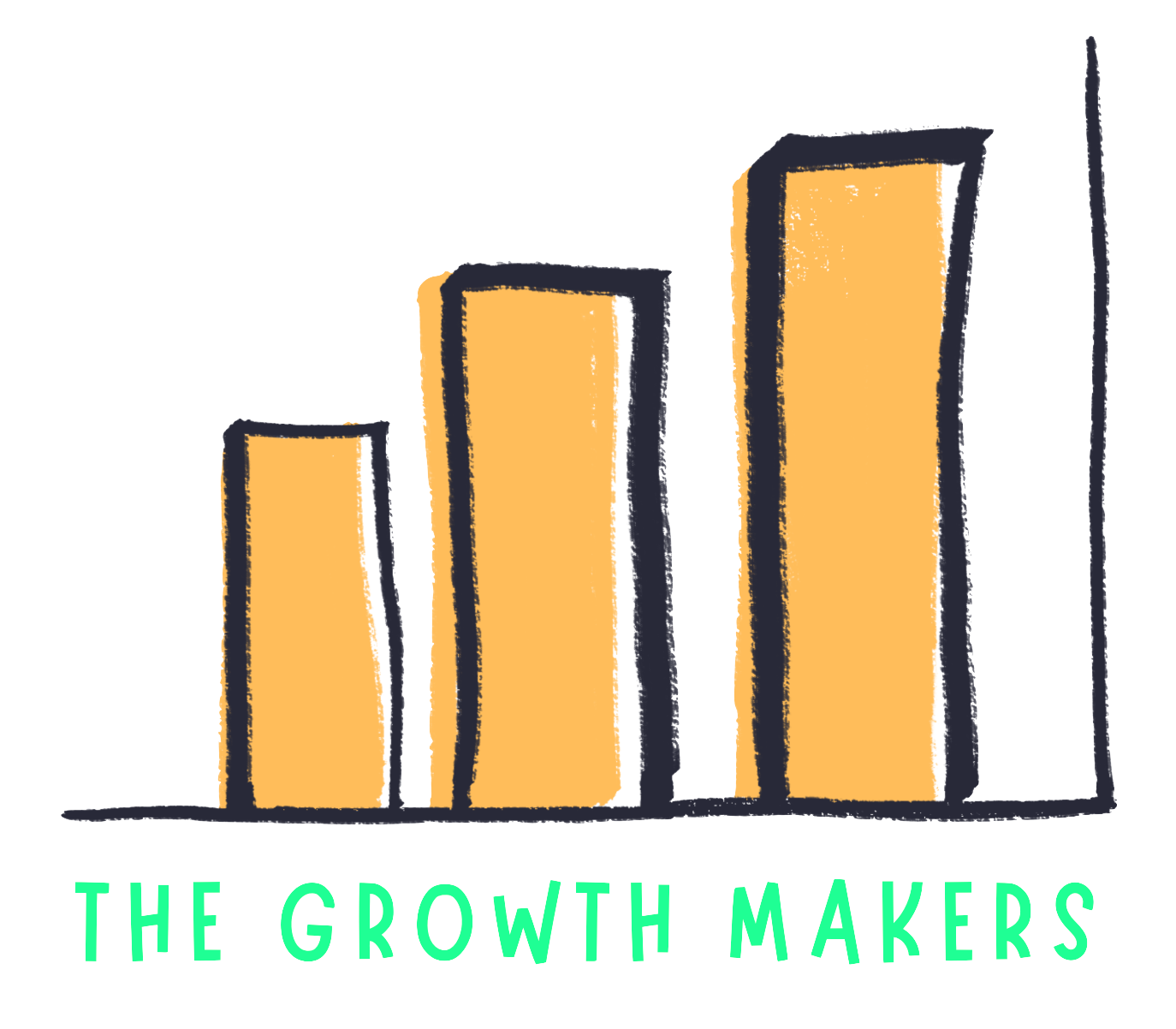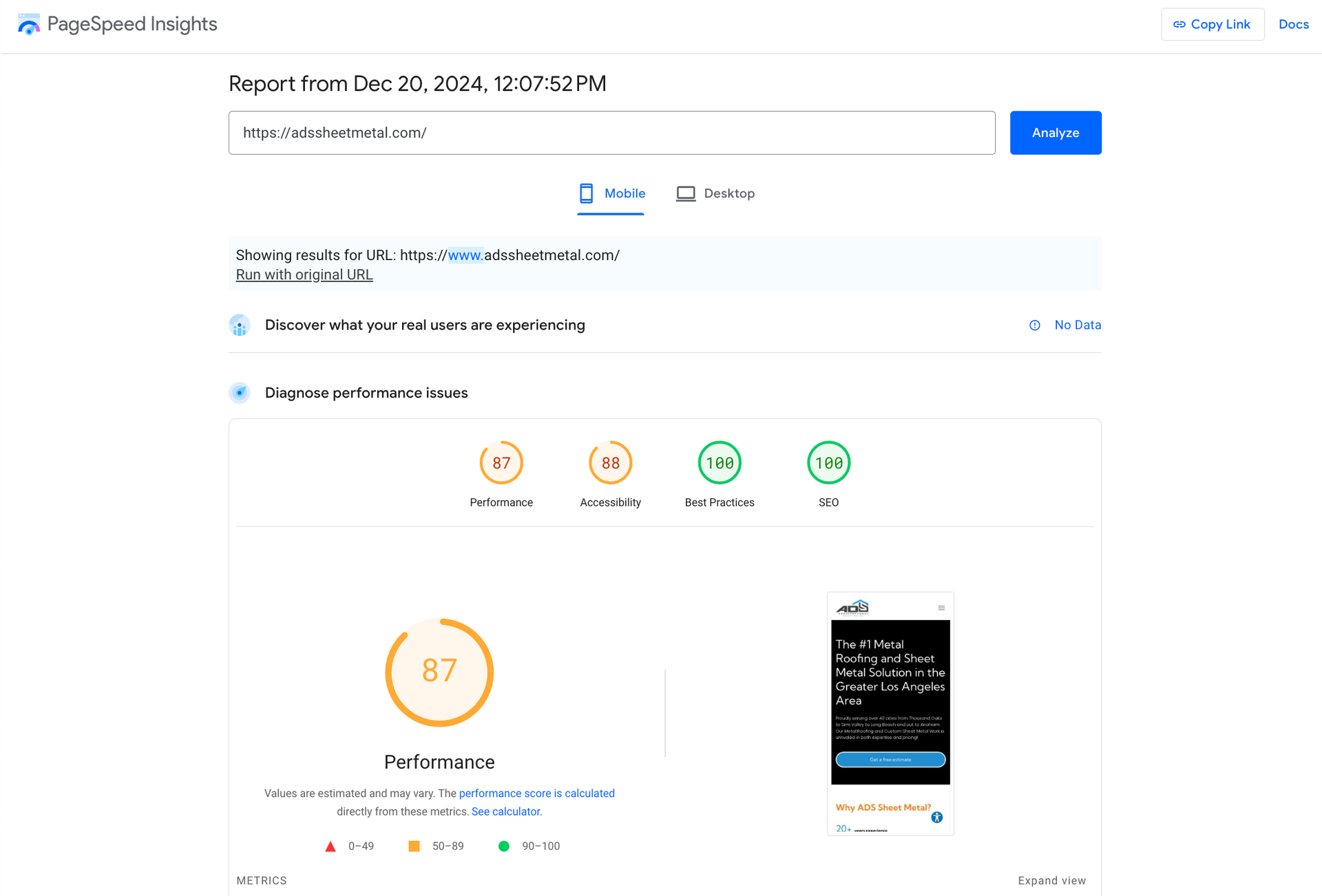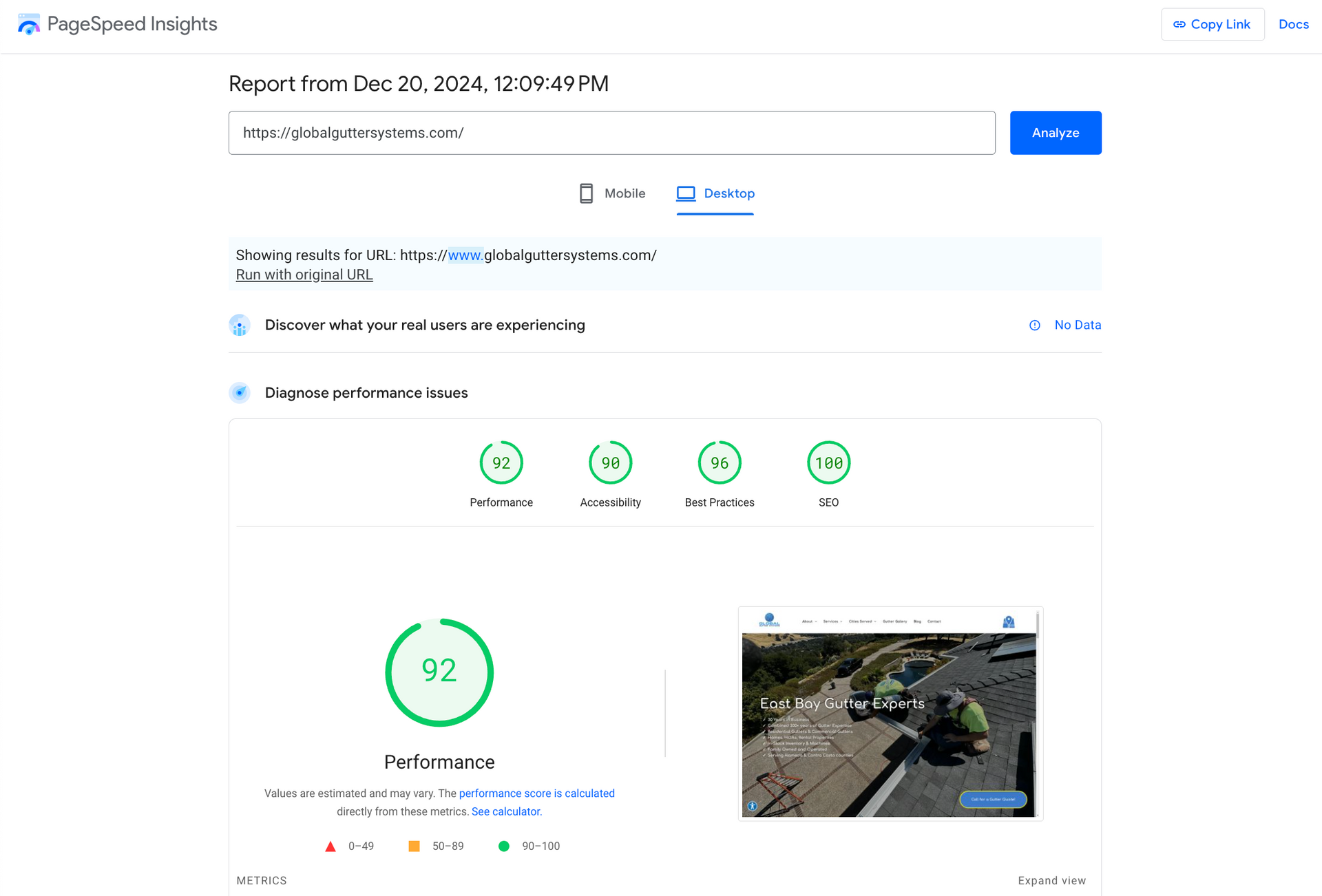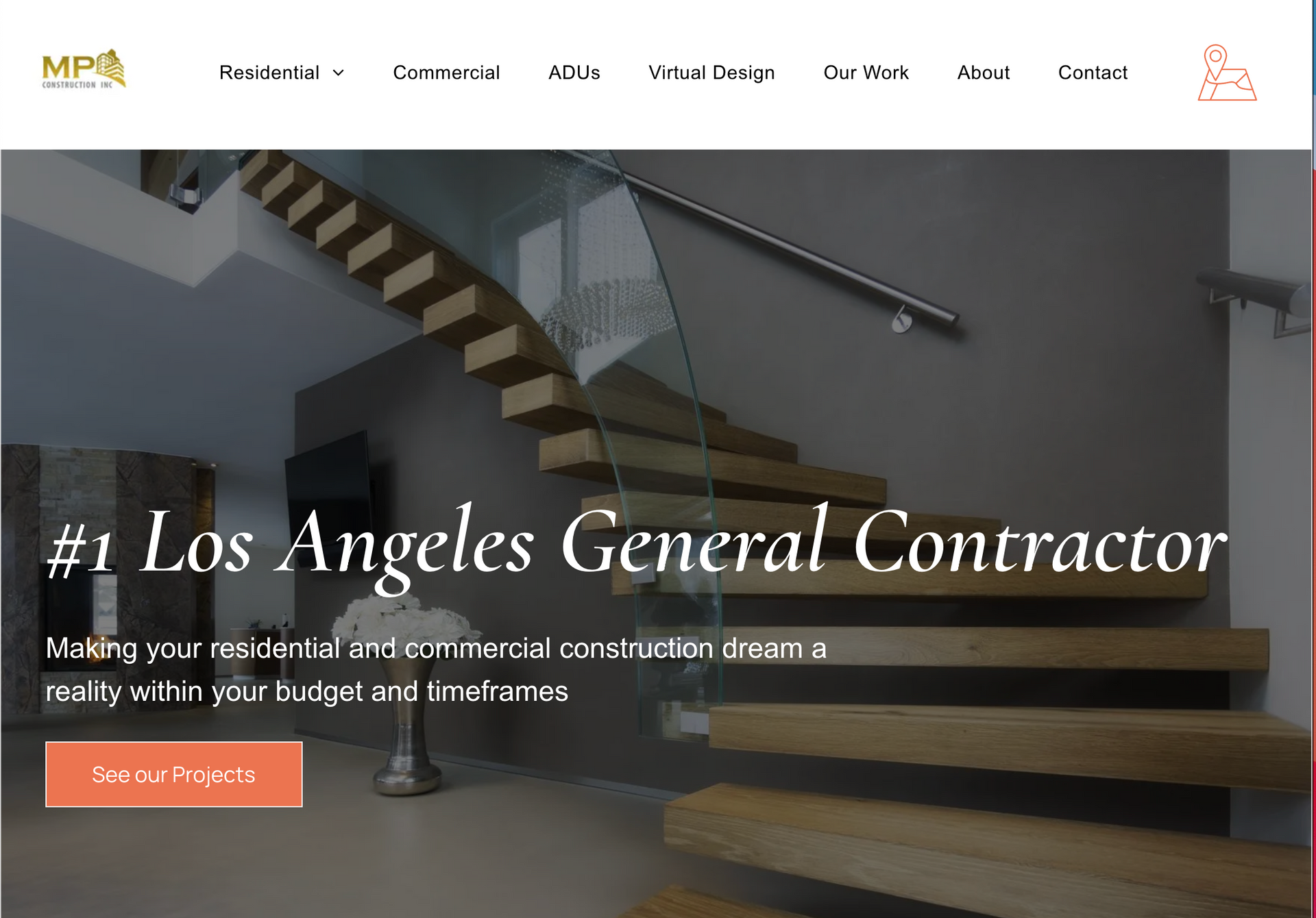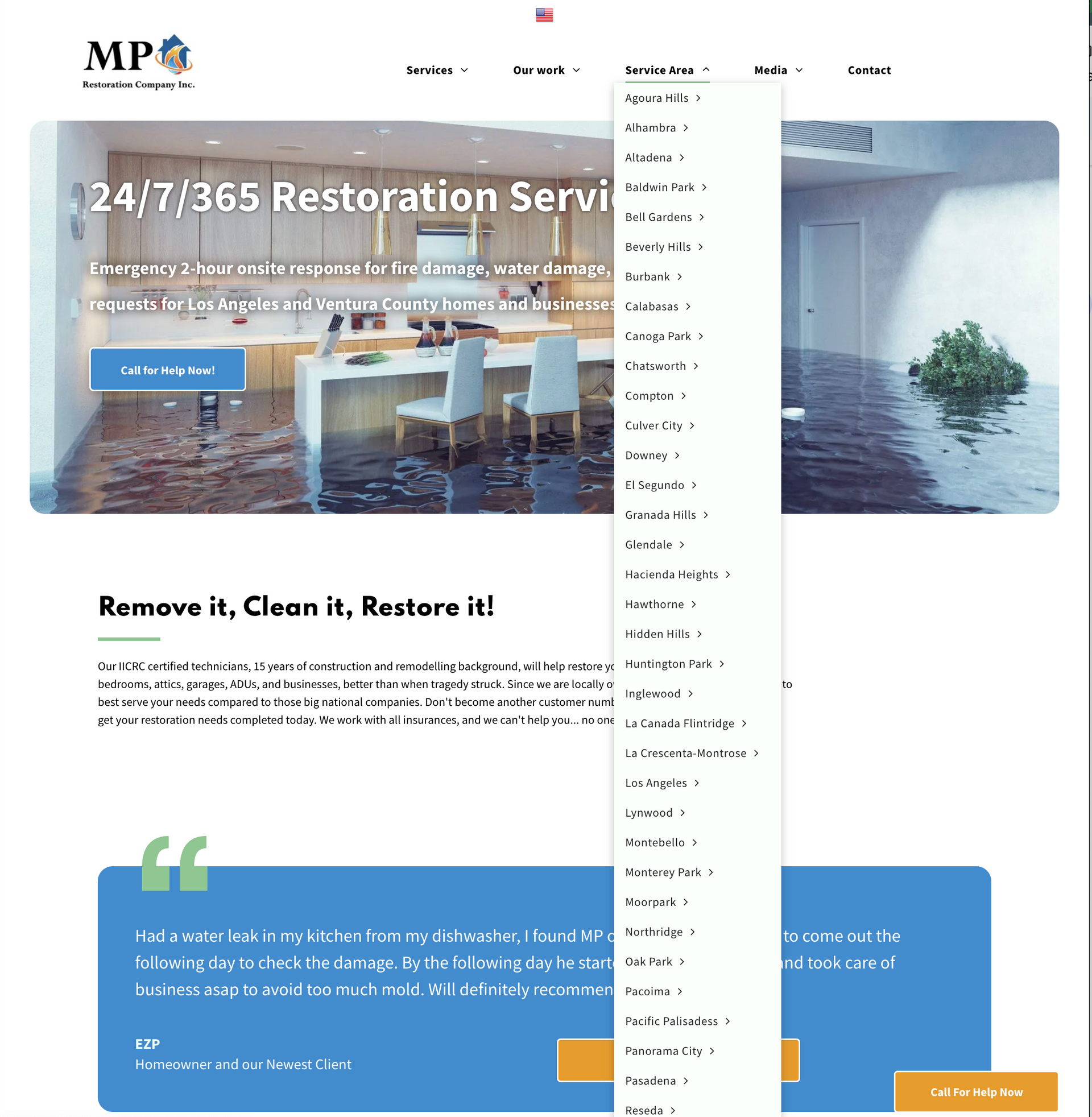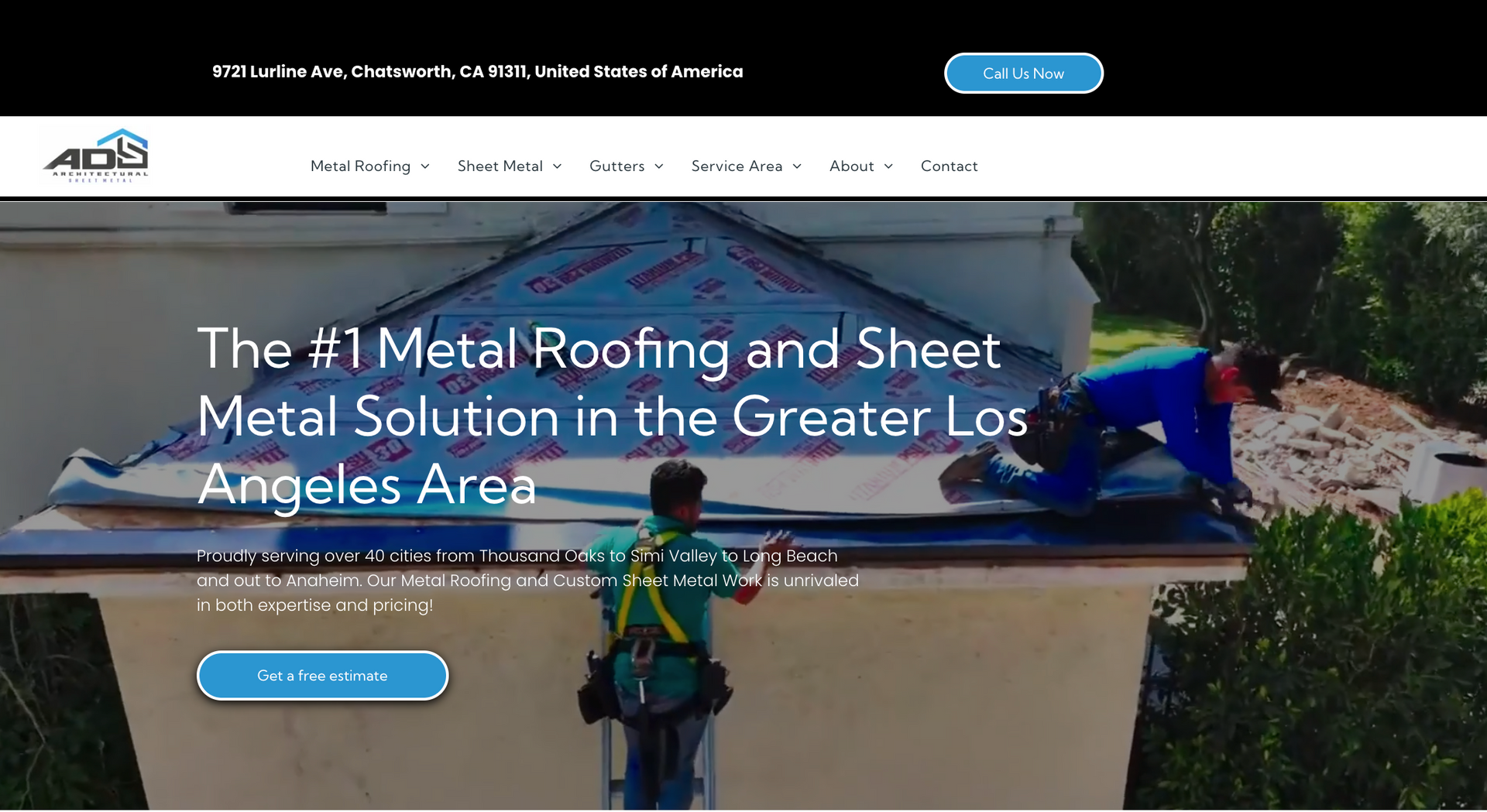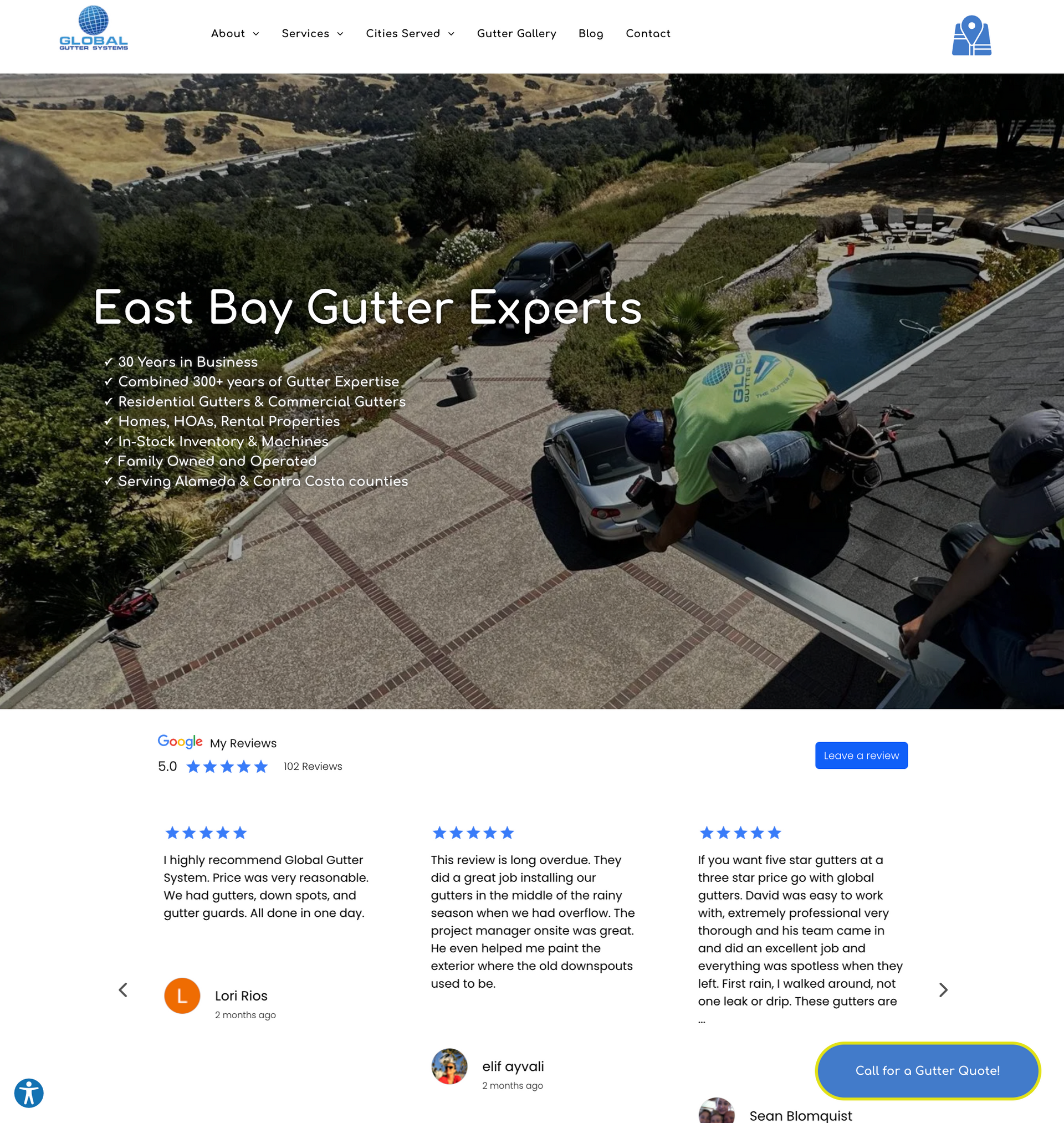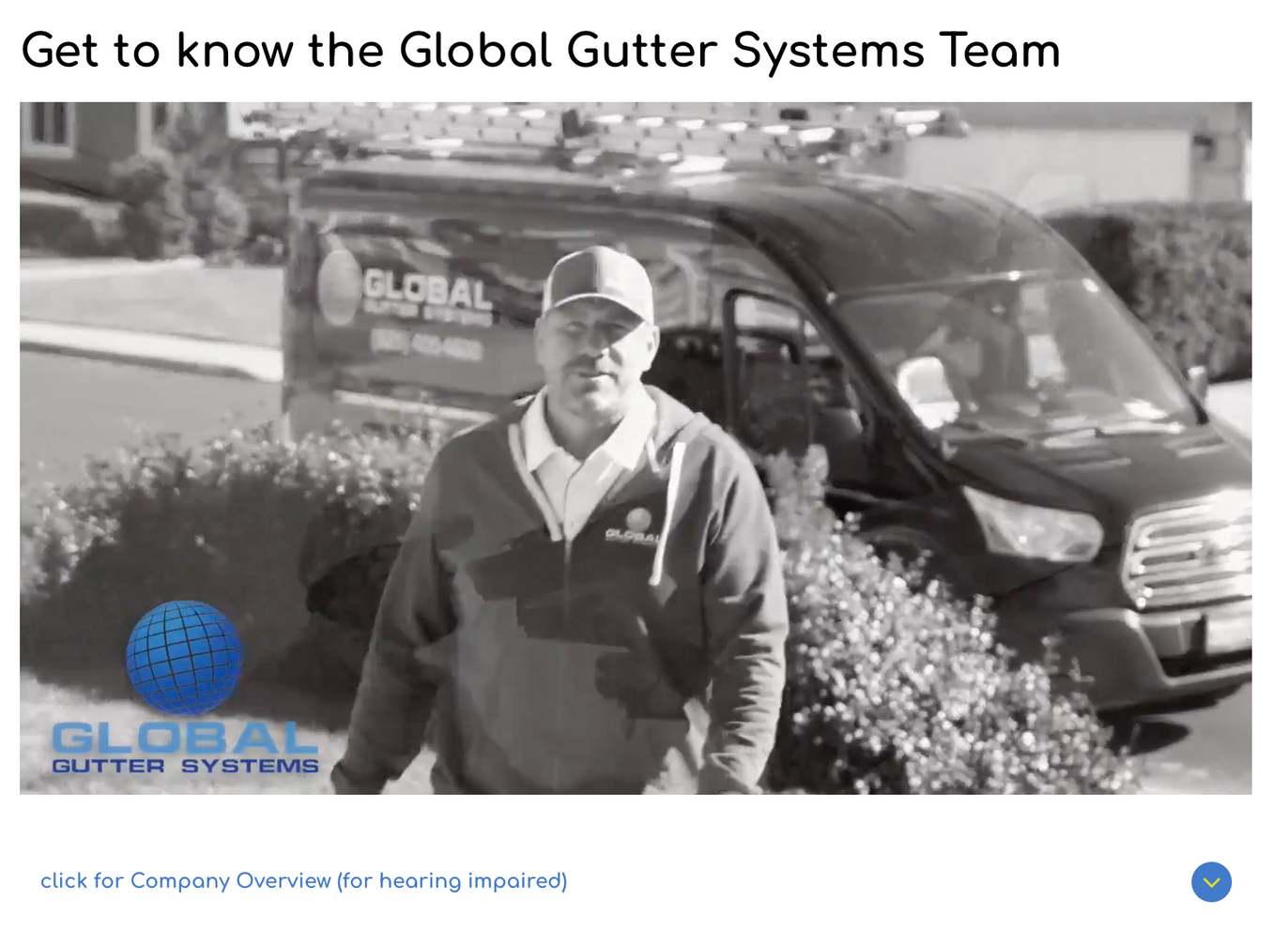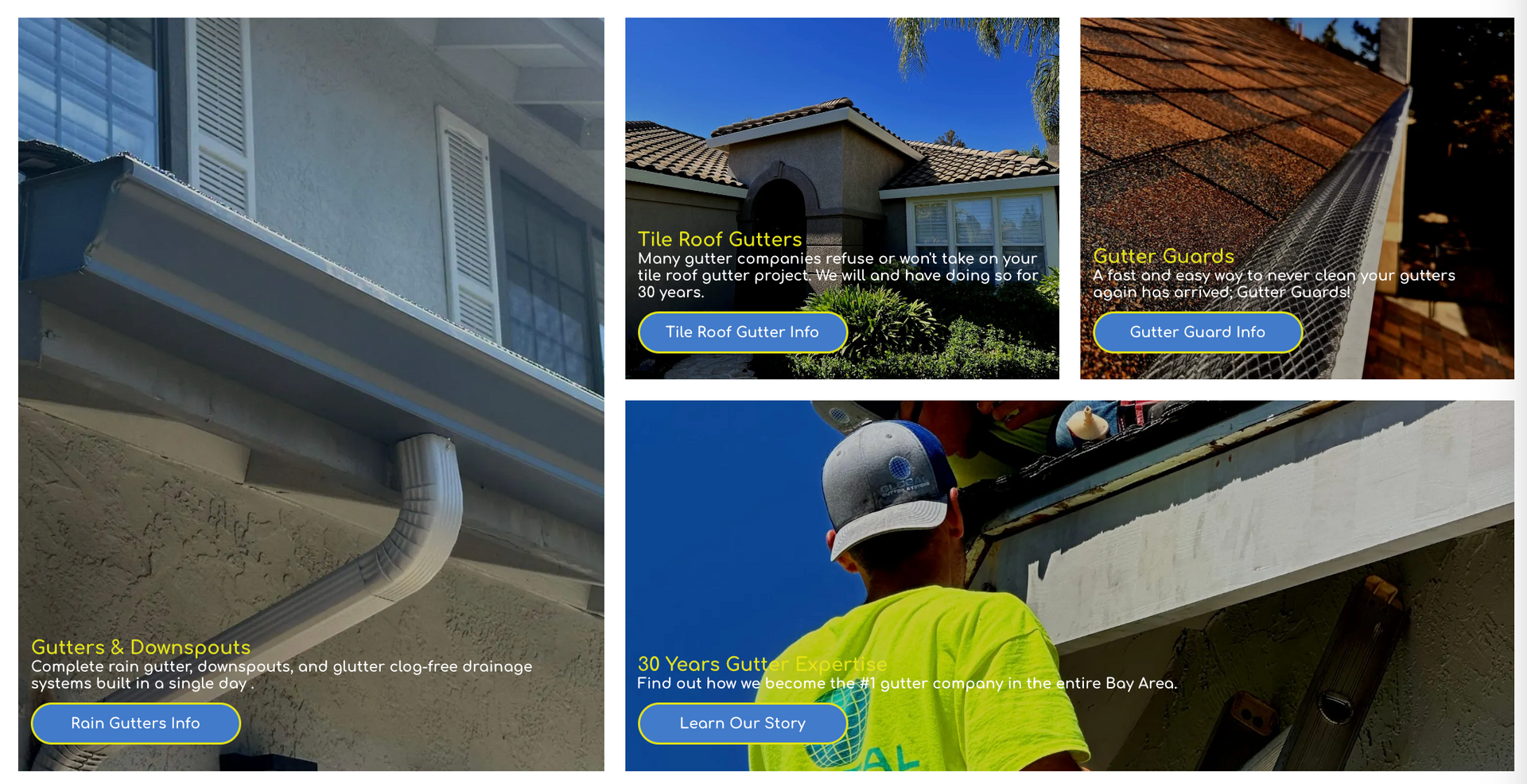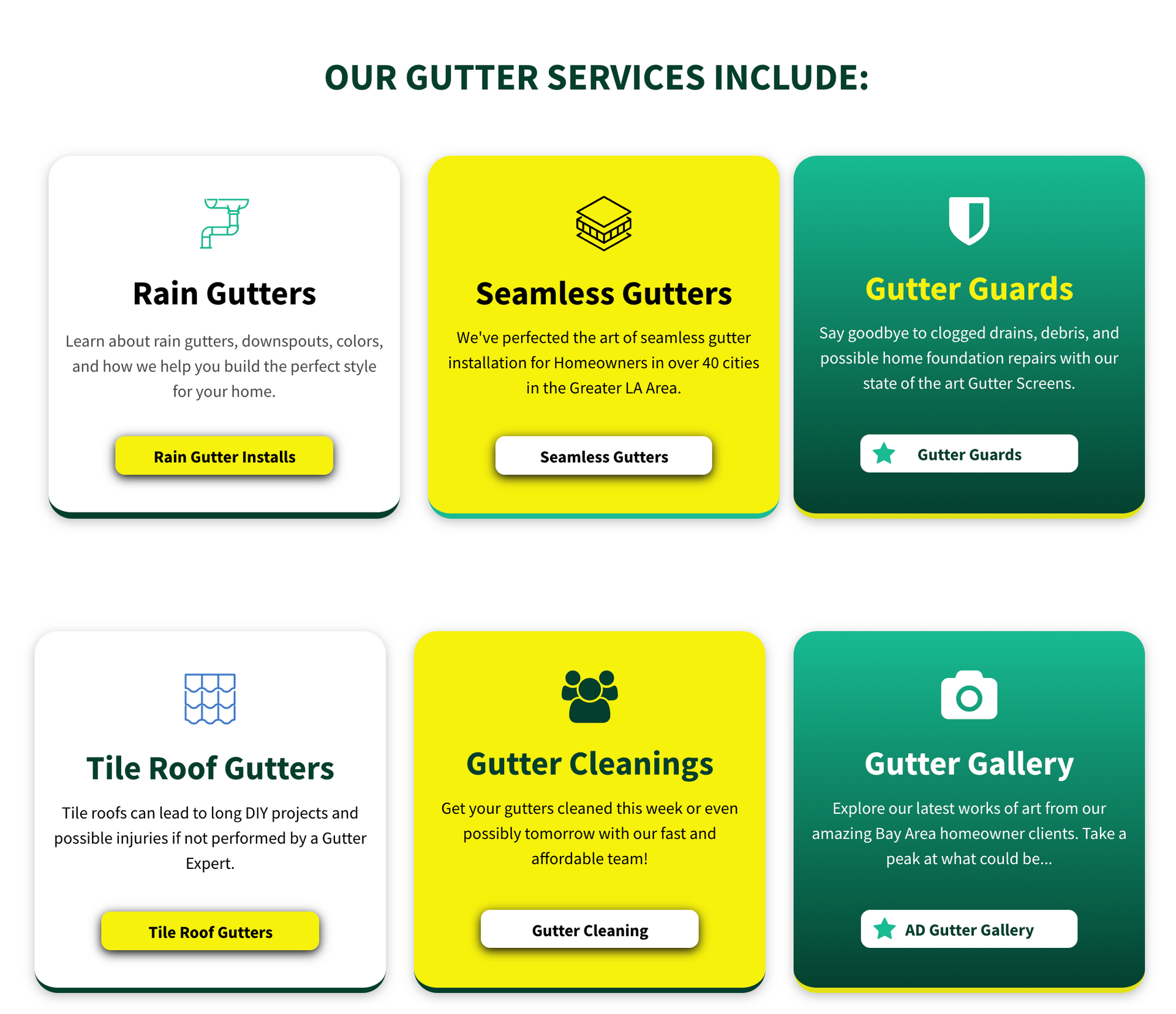Building the Perfect Home Page for Your Service Business Website
Building, designing, and writing an SEO-optimized website is hard. It takes a lot of knowledge of search engines, your local territory, your services, design, and more.
Did we mention it’s tough to get it right?
The most challenging page is your home page. In this article, we will help guide you through the process, but if at any time you feel that it's too technical, reach out to us, and we'd be happy to help.
The Articles Discusses:
- Who’s Visiting Your Website
- Why Website Speed is King
- On-page SEO has to be Paramount
- Top Navigation Setup
- Top Navigation color contrast
- Hero Section
- Reviews placement
- About / Intro Row
- Primary Service Rows
- FAQs
- Cities We Serve
- Location and Map
- Footers
Build Your Home Page for Customers not You!
There are so many possible types of people in your local community. Local homeowners want “residential services,” local businesses need “commercial services,” and reporters and online bloggers are trying to decide to link to your website. Those are three different types of people to please.
We’ve created some websites that rank on page 1 of Google and get 25-50 website leads a month. Their home pages are vital in building initial trust to get to a service page to learn more and become a lead, quickly click the call button, or fill out a form on the home page.
You Need a Fast Website Above All Else
The human intention span is 8 seconds, but in the first two seconds, a website visitor to your homepage has decided whether they will stay. If it loads too slowly, they bounce back to Google.
C’mon, their roof is leaking, their gutter fell and hit the car, their plumbing is backed, or the heater stopped, and it’s frickin’ freezing outside!
Whoever creates your home page should run it through SEO software to ensure speed, SEO best practices, and ADA/WCAG compliance. The page should also load faster than your grandma telling you not to eat the last piece of pie during the Holidays.
We use both page speed insights and semrush to ensure optimal page loading speed. PSI is free, but Semrush is pricey software. This is just an FYI.
Mobile Device Speed Guidelines:
You want your mobile scores to be 50 or higher with a goal of improving the score to 60 or above. We also ensure this happens, and with some websites we're able to get those scores to 70-90! See ADS Sheet Metal for an example below:
Mobile Speed Advice:
You want your desktop score to be 90 or higher at all times, with a goal of 92-99. Every client of our has 90 or higher, and some are able to get 97 or higher. However, just be cautious of sacrificing design and conversions for 1 or 2 points higher on this grading scale.
Local SEO Considerations
Your homepage needs to be written and designed based on your primary category within your Google business profile. Why?
While your website is essential and can produce anywhere from 25 to 100 leads a month, your Google business profile and Google Maps could double or triple the number of leads you get from a website.
Every major city receives 1,000 to 10,000 possible local searches for your service expertise. If you don’t receive at least 50 inquiries monthly combined for all online marketing, your marketing is failing and needs a facelift. If you are this company, immediately contact us now for a free consult and bypass this whole guide.
So when your website ranks for the primary category listed within your Google business profile, such as roofing contractor, gutter services, or HVAC contractor, you are immediately telling Google that you are the real deal and that both your website and your Google business profile need to be ranked higher.
Top Navigation
Your top navigation should have your logo on the page's far left or the center. The logo should be “linked” to your home page. Never put “home” in the navigation; everyone knows to get to the home page, you just have to click the logo… I mean, it’s 2025; get rid of the top navigation for the home page already.
Always have these Top Navigation Headers
- Residential
- Commercial
- About
- Gallery
- Cities We Serve
- Contact
- Click the Call button on the top right
The only exception is that you can replace residential and commercial with the primary service industries you service, like HVAC vs. Plumbing if you do both, or Gutters and Roofing.
Choose the Right Logo for Your Navigation
Choose your logo with no tagline, just an image. The tagline will be too small and take longer to load. If you don’t have a full custom logo kit, learn more about logos here.
Top Navigation Background Color Advice
If you choose a white navigation background, your logo must stand out. Bold logo colors are always a must. If you choose a colored background, make it dark and ensure the logo is bright. You want a lot of contrast.
Navigation Link Colors
Ensure all navigation content is in a font that is not too wide and its color is highly contrasted from the background—a white background with black content or a dark background with white navigation lettering.
Row 1: Hero Section
The first “row” under the top navigation is the “hero section.” It needs an H1 header based on your Google Category / Main Services, with a short intro of under five lines. These lines should have ⅓ to ¼ of the page. We like bullet points or statements on who and how you help. Do not include why; that is for the “About” and “Services” pages.
You can choose one of two types of Hero Sections.
You can have a full background image with an H1 Header and content left-justified (on the left side of the page). You can also have two columns: column one contains your H1 and description, and column two contains the picture. We’ve found that option 1, with a full background, is best for service companies.
If you use the image as a background, you must ensure that it has an overlay of white or black with some degree of shading. The image is essential, but the contrast between it and the content should be straightforward.
Row 2: Reviews
No one cares about “your story,” not yet… Instead, provide a widget that supplies real-time images and content for your Google Reviews. If you don’t have that many to show, pick three or four and put them on the page.
Warning: The widgets/plug-ins require technical knowledge to be set up and installed correctly. If you are going to create your own “row of testimonials,” you’ll want an expert to do alt tag and SEO optimize the pictures and framing.
Row 3: Intro
Take the time, spend the money, and get a 30-second video intro to your company. The owner should explain why and how they can help. Once you have this video, embed it into the row; do not link it from YouTube.
Why do you never embed your YouTube videos on your website pages?
This slows down the page and risks them jumping to YouTube. You can’t compete with dancing cats and get rich snake oil schemes that hit their side feeds.
Now, under the video section, put a button linked to your about and title it “About Us” or “Our Story.”
If you can’t afford it, simply put a picture of the owner and/or team, summarizing the company’s past successes, and keep the wording to 150 characters or less. Use that Google Category keyword in the text if you write a summary.
Row 4: Primary Services
Next, go right into the solutions. This row should have 2-4 columns with one solution per column and have a picture and the name of the service. Under the name of the service, you want to provide a catchy reason to click on the page. Something like “Seamless Gutters” as the H2 header in the box, with the content reading, “40+ colors and designs with zero seams.”
Each Main Service should have a button that is easily seen, with content that tells the visitor where they go and what they can get out of it if they click it. If you do this, you satisfy Google’s “anchor text” requirements. If you do not, Google will rank your home and every website page that doesn’t do this farther down the list of website pages (i.e., no visibility, no traffic, no leads).
The first row should include residential or commercial services, whichever you spend more on. The following service row should consist of the other. Keep them separate to capitalize on the primary target audience.
Row 6: FAQs
Write down the top 5 questions every prospective customer asks about your services. Now write down the answers you say on the phone. Create an accordion widget where they can click open the answer. The title is the question, and the answer is the revealed content.
Row 7: Cities We Serve
You want to create an H2 Header that lists the cities we serve. Under that, you should include a navigation widget with a link to every city in your service area. When visitors click the link, they will be redirected to the city landing page.
Row 8: Footer and Location Maps
We believe in big footers. A footer can be seen on every page of your website. Footers should start with two rows.
Row 1 of the Footer
Row 1 of your footer has two columns. In Column 1, you place your Google Map widget with a link to your Google Maps Profile. In Column 2, you put your business contact Me Now buttons—one for calls and one for online forms.
Row 2 of the Footer
Create three columns in this footer row. Column one has a small logo with a link to your home page. Under the logo is your company mission statement; keep it short, with 50 characters or less. Under that description, include your business license. Column two has a mini version of your top navigation for quick access. Column three has your business address and phone number.
TIP on footers: never include social media icons. You want to keep people on your website, not go search on other platforms.
Hope this helped, need more help?
Our agency has perfected SEO-optimized websites that produce page 1 rankings and abundant website leads. If this article was too technical, please submit a form today. Thank you!
